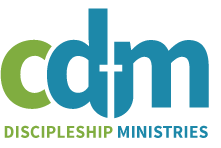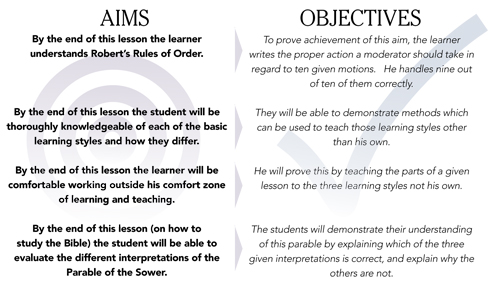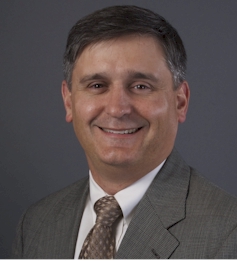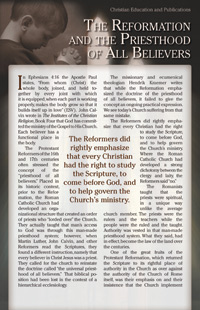For the past 17 years, Equip to Disciple, formerly Equip for Ministry, has attempted to keep you up to date regarding the training and resources ministryof Christian Education and Publications. We have included information related toCEP’s ministry throughout the church such as conference training and resources.We have attempted to bring to you some of the books that we have felt are mostimportant especially for the leader’s awareness.
With my departure from CEP, after serving for 36 years, it has been my privilege and responsibility to function as editor of this publication. We have appreciated the kind words over the years, and we have taken to heart criticisms that have occasionally come across our desk. Now it is time to bring this publication, in its present form, to a halt or as we say in the newsbusiness, to put it to bed. My successor, Dr. Stephen Estock (see article in this issue) will become the provisional CEP coordinator and will be presented to the 2013 General Assembly for election to this ministry. He will determine what the communication resources from CEP will be. I ask you to pray for him. This is a challenging time for CEP, as well as the PCA, the broader Reformed and evangelical church, our country and world. (See lead article). During my 36 year tenure, CEP has struggled financially. I continue to believe that God is going to raise up new churches and individuals who see the strategic role of CEP in the life of the PCA, as we train leaders and teachers, youth and children’s workers, women’s ministry leaders, and provide the best resources for “making kingdom disciples” which has been our motto, describing CEP’s ministry.
I was asked, in October, to give the devotional and make some final comments at my last coordinator’s meeting. In this final issue, the lead article, “The Challenge Before Us,” was presented at that meeting. In a general way it says what I feel and think about the topics addressed in the article. Having been on the organizing committee of the PCA and then having served these years at this level, I do believe we are at a critical point in the life of our church. Where we are on God’s time clock, (We don’t have forever), only God knows, but we must work, pray, and disciple our covenant people in God’s truth within the Kingdom setting.
There are several books in the review section focusing on critical themes, especially as they relate to the PCA and broader church in general. Once again thanks for your years of support. Please do keep CEP at the top or near the top of your prayer list. The staff needs your prayers, especially through this time of transition. At our September committee meeting, in saying the formal goodbyes, one of the members said that Charles will be an ambassador for Christian education even as he is involved in other ministries. That is a true statement. Thatis what Christ’s commission is all about and his words are my marching orders.
Thank you so very much and God bless you!
Gratefully in Christ,

Charles Dunahoo, Coordinator




 Teaching elder Dr. Stephen Estock has been called by the Christian Education and Publications Committee, at its fall meeting, to become the provisional coordinator as of January 1, 2013, according to the RAO (Rules of Assembly Operations). He will be presented to the 41st General Assembly, meeting in Greenville, SC, in June to be elected as coordinator to replace Dr. Charles Dunahoo who will be leaving the position, December 31, 2012.
Teaching elder Dr. Stephen Estock has been called by the Christian Education and Publications Committee, at its fall meeting, to become the provisional coordinator as of January 1, 2013, according to the RAO (Rules of Assembly Operations). He will be presented to the 41st General Assembly, meeting in Greenville, SC, in June to be elected as coordinator to replace Dr. Charles Dunahoo who will be leaving the position, December 31, 2012.